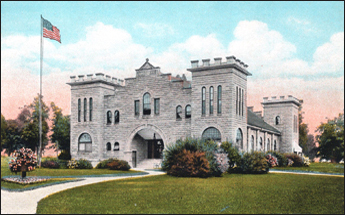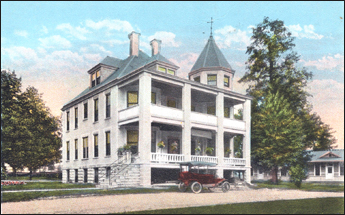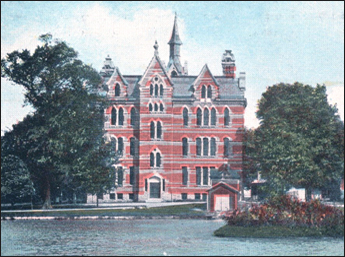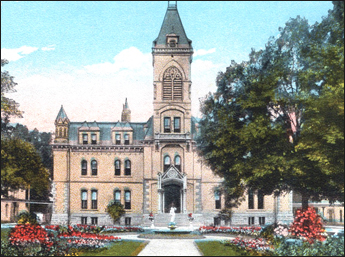
The Beginning
Money was collected from taxes levied during the Civil War to care for the dependents of soldiers, but the government mishandled the money. By the war's end, several families were living in county infirmities under deplorable conditions. Seeing this, soldiers still living began contacting government officials, requesting that something be done to help the families of the fallen soldiers.
Eventually, the Grand Army of the Republic (GAR), a federation the veterans formed after the close of the Civil War to foster comradeship, financed the purchase of a home for veteran's orphans in the city of Xenia. Xenia was chosen because people from Greene County had long been interested in the plight of the veterans' families, and Reverend P.C. Prugh had been raising funds for the project for some time. Rev. Prugh is thus referred to as the "Father" of the movement to establish a home. Additionally, Chaplain George W. Collier is credited with being the first to suggest the idea of a home to the GAR.
A temporary location was established in town, and 100 acres of farmland south/southeast of town were purchased for the permanent location. Children began arriving at the home in December 1869, and in August of 1870, they moved to the farm. Responsibility eventually passed from the GAR to the State of Ohio, and the state officially adopted the children.
Structure of "Home Life"
The home conducted church services, established a regular school curriculum as well as education in several trades, started a library, and supplied on-site medical attention. The list of trades is impressive, including tin smithing; wood carving; knitting; dress making; tailoring; farm, florist, and garden work; butchering and slaughtering; telegraphy, and blacksmithing. The children also enjoyed such extra-curricular activities as choir, orchestra, concert band, military band, drum corps, and athletics. Beginning in April of 1876, the home put out their own paper, titled the Home Weekly. Children were discharged from the home at the age of 16.
Athletics
The Athletic teams at the home (Woodrow Wilson High School) competed as the "Cadets". State Championships were won in Track & Field in the years 1940, 1941, 1942, 1943, 1955, 1956 and 1958.
Closing of the Home
OVCH officially closed its doors to incoming students in 1995. The home completely closed in 1997 because the number of students living at OVCH had dropped significantly, as had support for the continuation of the school.
Dates to Remember...
1869 - The Ohio Soldiers' and Sailors' Orphans' Home began on E. Main St. in Xenia, Ohio on December 16, 1869, with 2 children.
1870 - Taken over by State of Ohio on Apr. 21, 1870, and about 120 children moved to the farm on "Poverty Knoll", which was originally owned by William Pelham, on Aug. 25, 1870.
1883 - The first high school graduating class. There were three graduates.
1884 - Part of the grounds were destroyed by a tornado Apr. 27, 1884.
1873 - The Administration building was completed.
1904 - The armory building was built.
1978 - The name was changed in 1978 to the "Ohio Veterans' Children’s Home" because studies showed that the home served very few orphans.
Sources
Hughes, Edward Wakefield, and William Clyde McCracken. Pride of Ohio: The History of the Ohio Soldiers' and Sailors' Orphans' Home at Xenia, Ohio, 1868-1963. Ohio Association of Ex-Pupils: Xenia, Ohio, 1963.
Ohio Soldiers' & Sailors' Orphans' Home, Ohio Veterans' Children's Home, Student Records 1869 – 1995 . Compiled by John Davis, et al. Ohio Veterans' Children's Home Records Department: Xenia, Ohio: 1997.




All Rights Reserved